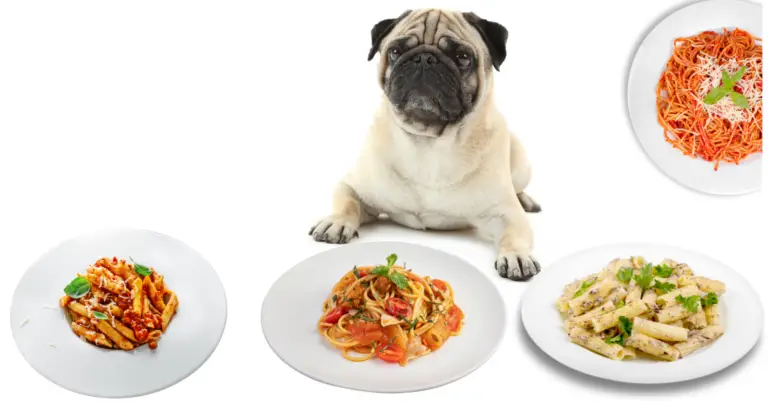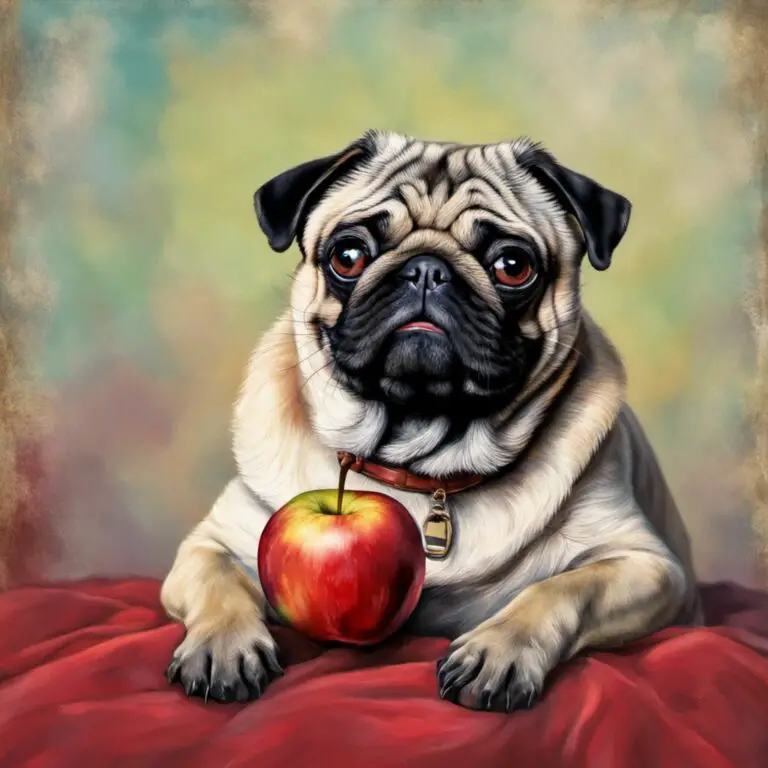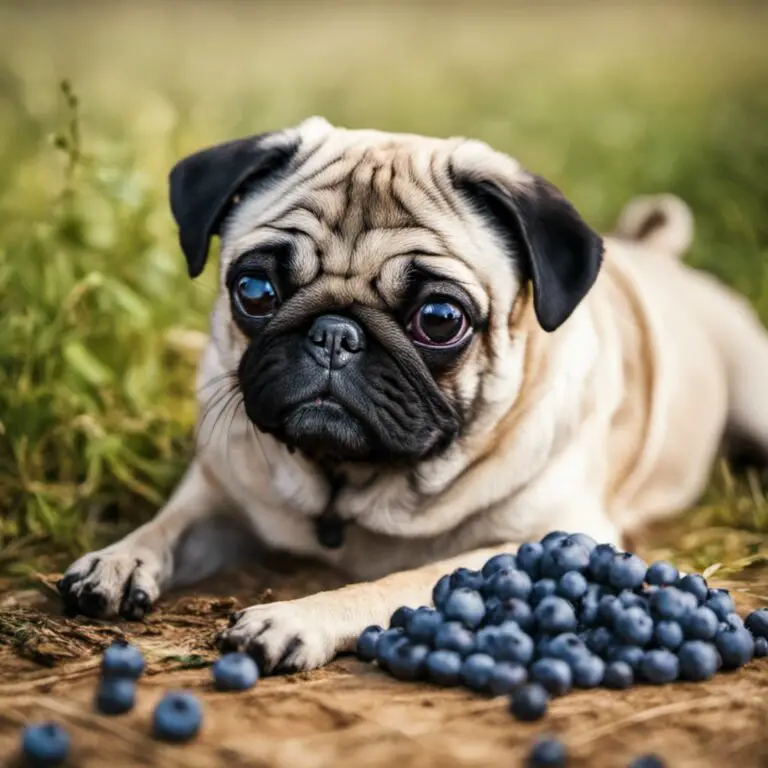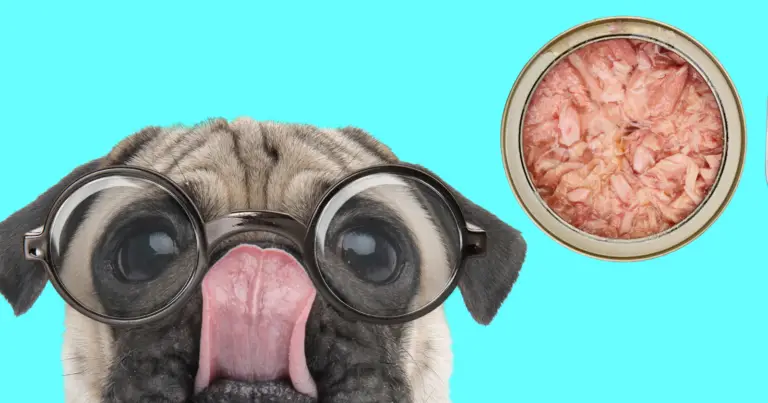Can Pugs Eat Chocolate? A Clear Guide for Pet Owners
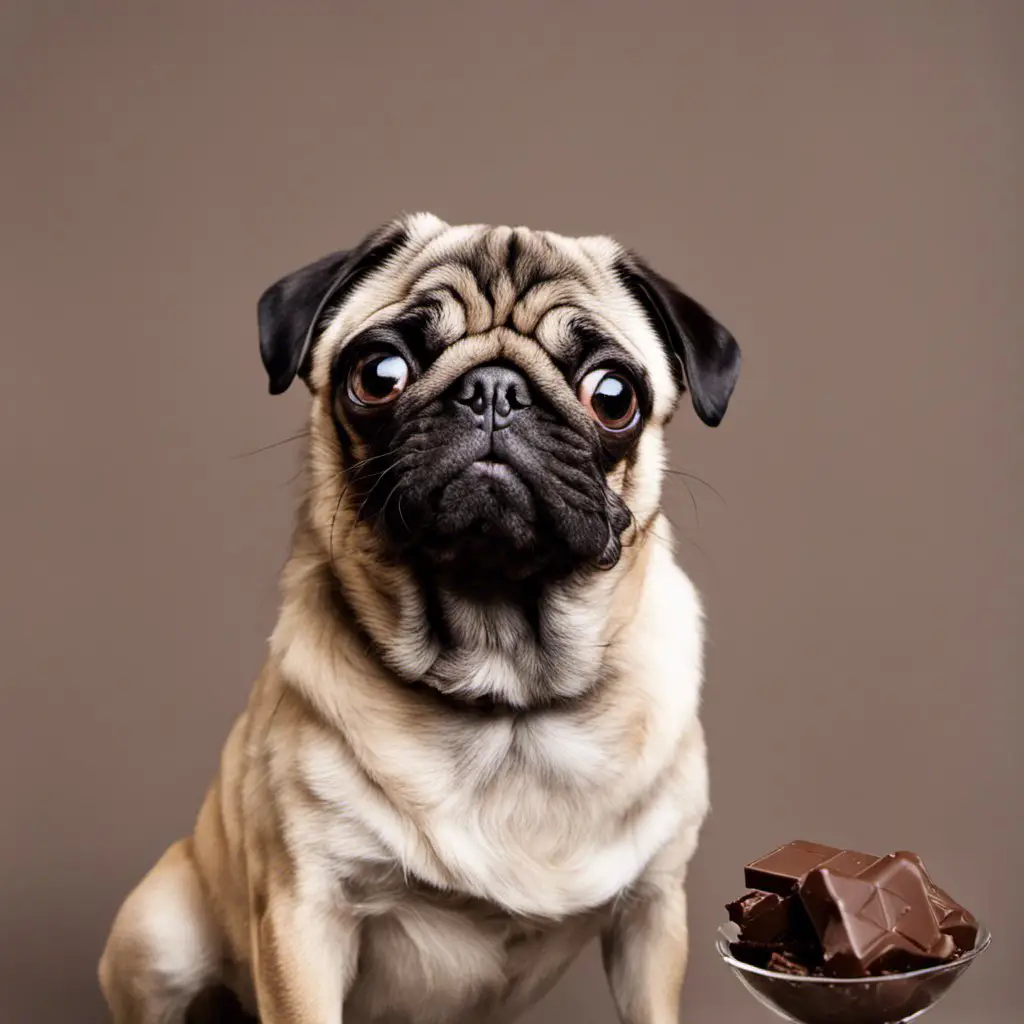
When it comes to your pug’s diet, it’s essential to be mindful of what they can and cannot eat. Although these adorable dogs might seem eager to consume anything and everything, certain foods can have adverse effects on them.
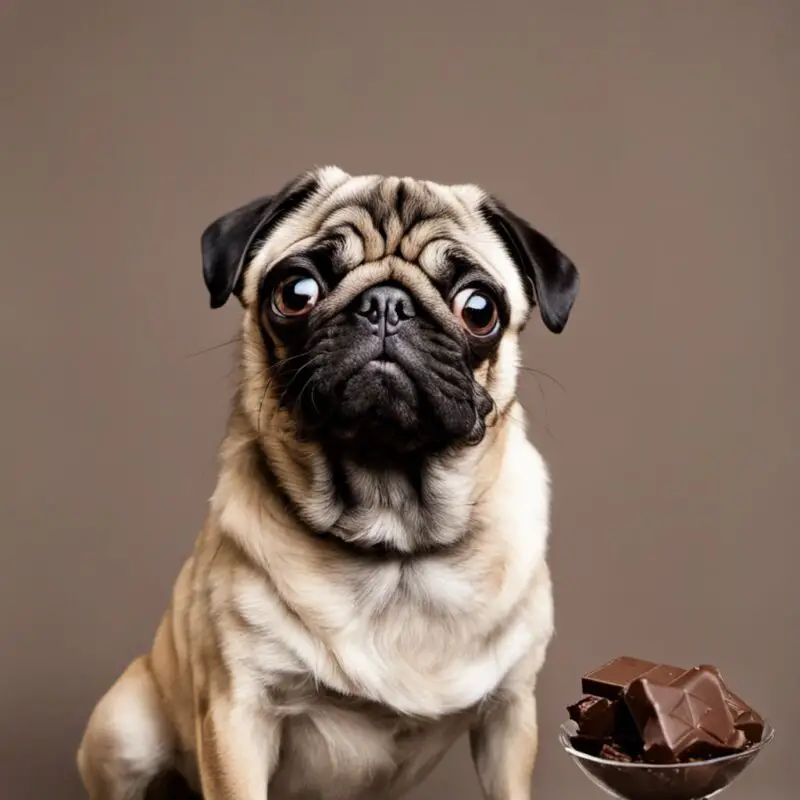
One such food is chocolate. Can Pugs Eat Chocolate? Despite being a favorite treat for many people, it can potentially cause severe harm to our canine friends if ingested.
The main reason chocolate is harmful to dogs, including pugs, is due to the presence of a compound called theobromine, which is similar to caffeine. Theobromine can adversely affect a dog’s central nervous system, kidneys, and heart, and it is poorly metabolized by dogs, leading to toxic build-up in their systems.
The reaction can be severe and even fatal in some instances, depending on the type and amount of chocolate consumed.
Contents
Get The Free Food Eating Guide That Keeps My Pug Happy and Playful Even at 13 Years Old
100% Beginner Friendly & Lists Real Foods Your Pug Can Actually Eat!

Being attentive to your pug’s food intake is essential to maintain their health and well-being. By avoiding chocolate and other harmful foods, you take a significant step towards ensuring your pug stays healthy and happy throughout their life.
Table of Contents
The Science Behind Pugs and Chocolate
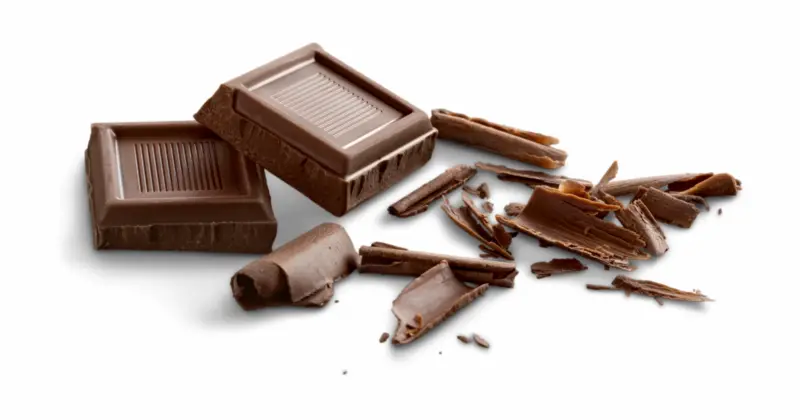
Chocolate contains substances called methylxanthines, which include caffeine and theobromine. These chemicals can be toxic to dogs, including pugs. Theobromine is particularly difficult for dogs to metabolize, making it especially dangerous for them to consume chocolate. Even small amounts of chocolate can lead to symptoms like restlessness, vomiting, and diarrhea in pugs and other dogs. Science | AAAS.
The toxicity of chocolate to pugs depends on the type of chocolate and the amount consumed. Dark chocolate is much more dangerous than milk chocolate because it contains higher levels of theobromine Fuzzy Rescue. Other sources of theobromine, such as cocoa powder and semi-sweet chocolate, can also be harmful to pugs. The toxic effects of chocolate on pugs are not limited to their digestive systems; theobromine can also affect their central nervous systems, kidneys, and hearts. Pug Facts.
It’s important for pug owners to be cautious about the chocolate-containing products in their homes, as accidental ingestion can lead to chocolate poisoning. The effects of chocolate poisoning can vary based on the amount and type of chocolate consumed by the pug. Possible symptoms may include restlessness, vomiting, diarrhea, heart arrhythmia, and even seizures in severe cases PetThings.
To keep your pug safe, it’s best to avoid giving them any chocolate or products containing cocoa powder and always keep such items out of their reach. Instead, consider offering your pug healthier alternatives like dental treats or dog-safe snacks.
Effects of Chocolate on a Pug’s Health

Chocolate consumption can have serious consequences for a pug’s health. The substance contains a component called theobromine, which is toxic to dogs and affects their nervous system, kidneys, and heart. This section will outline the immediate physical symptoms and long-term consequences of chocolate ingestion for pugs.
Immediate Physical Symptoms
Upon consuming chocolate, a pug may begin to exhibit several symptoms that indicate chocolate poisoning. These symptoms can include:
- Vomiting and diarrhea: A dog’s digestive system reacts negatively to the theobromine in chocolate, often leading to gastrointestinal distress, vomiting, and diarrhea.
- Tremors and seizures: The nervous system of a pug can also be affected by the theobromine, causing muscle tremors and even seizures in more severe cases.
- Increased urination and restlessness: Chocolate consumption can lead to increased urination and restlessness in pugs, which can also be signs of elevated heart rate caused by the toxin.
- Hyperactivity: A pug that has ingested chocolate may become abnormally hyperactive due to the effect of caffeine-like compounds in their system.
Long Term Consequences
While immediate symptoms are concerning, it’s also important to recognize the potential long-term consequences of chocolate poisoning in your pug:
- Abnormal heart rate: The theobromine in chocolate can lead to heart issues in your pug, including an abnormal heart rate and potential cardiac failure.
- Distress and internal bleeding: Severe chocolate poisoning can cause a dog to experience distress and, in some instances, internal bleeding as their body struggles to process the substance.
- Damage to the nervous system: The impact of chocolate on a pug’s nervous system can have lasting effects, potentially causing permanent damage.
- Poisoning: In extreme cases, untreated chocolate poisoning can be fatal for pugs, emphasizing the importance of seeking veterinary care immediately if you suspect your dog has consumed chocolate.
It’s crucial to keep chocolate out of your pug’s reach and be vigilant for any symptoms should chocolate ingestion occur. Prompt attention and veterinary care can help mitigate the potentially harmful effects of chocolate on your pug.
Recognizing Signs of Chocolate Poisoning in Pugs
Chocolate is toxic to dogs, and this is especially true for small breeds like Pugs. Recognizing the signs of chocolate poisoning is crucial for acting quickly and getting your Pug the help they need. Some common symptoms to monitor include vomiting, diarrhea, increased body temperature, and muscle rigidity1.
In addition to these symptoms, Pugs may display signs like rapid breathing and an increased heart rate, indicating caffeine toxicity2. Caffeine is also present in chocolate, and dogs are more sensitive to its effects than humans. Elevated body temperature and heightened blood pressure are other indications of caffeine exposure in your Pug3.
Sometimes, chocolate poisoning can lead to more severe consequences for your Pug. Restlessness, agitation, and hyperthermia may develop 4. In the most serious cases, your Pug may even experience seizures.
If you notice any of these signs in your Pug after they have consumed chocolate, it’s essential to take immediate action. Contact the Pet Poison Helpline at 855-764-7661 or your veterinarian to seek professional advice and treatment1. The severity of your Pug’s reaction to chocolate depends on how much they have ingested, so it is important to monitor their condition closely and be prepared to act if necessary.
In conclusion, watching your Pug for signs of chocolate poisoning is a vital responsibility for pet owners. You can ensure your furry friend’s safety and well-being with prompt action and medical attention when needed.
Can Pugs Eat Chocolate? What to Do if Your Dog Eats Chocolate (Home Remedies)
Treatment of Chocolate Poisoning in Pugs
Treatment for chocolate poisoning in pugs generally requires prompt action. If you know or suspect your pug has consumed chocolate, it is crucial to contact your vet or the 24-hour ASPCA poison control hotline at 1 (888) 426-4435 for professional advice. They can help you assess the severity of the situation by asking important questions, such as what type of chocolate your pug ingested.
A visit to the veterinarian or an emergency vet is often necessary, as they can provide suitable treatment depending on the severity of the poisoning. Inducing vomiting may be recommended if the chocolate was consumed within one to two hours. Your vet may administer hydrogen peroxide or prescribe a specific emetic medication to achieve this.
In some cases, the ingestion of activated charcoal may be suggested. Activated charcoal works by binding to the theobromine, which is the harmful substance in chocolate, and helps prevent its absorption into the bloodstream. Your pug may also need intravenous fluids to combat dehydration and stabilize their condition.
Medications such as diazepam, midazolam, acepromazine, or methocarbamol might be administered to address seizures or muscle tremors. If your dog experiences sinus tachycardia or elevated heart rate, a beta blocker such as propranolol could be needed to manage the arrhythmia. Remember that timely treatment and close monitoring are essential for the best possible outcome.
The Role of Diet in a Pug’s Health
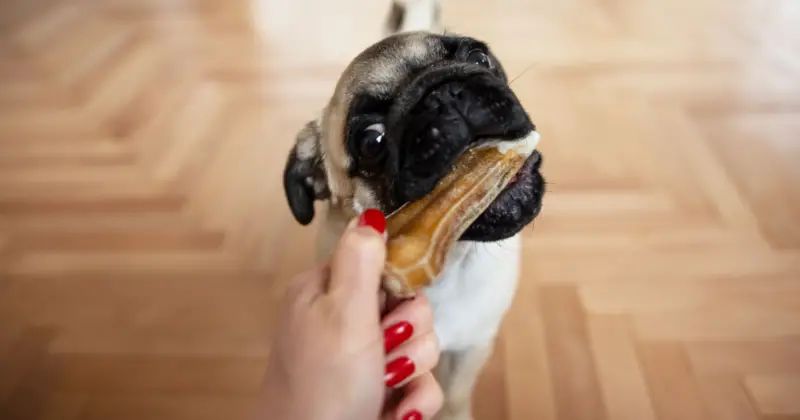
A proper diet is crucial for a pug’s overall well-being and longevity. Having a balanced diet that provides essential nutrients helps prevent obesity and other health issues.
Healthy Alternatives to Chocolate
While chocolate is toxic to pugs and should never be fed to them, some safe and healthy treats can be offered. The following options are nutritious choices that pug owners can use to reward their pets:
- Fruits: Apples, strawberries, and raspberries are fruit options that pugs can safely enjoy. Remove seeds before feeding to avoid choking hazards. (1)
- Vegetables: Carrots, broccoli, and sweet potatoes are dog-friendly veggies that provide vitamins and fiber. Always cook and cut into small pieces for easy digestion. (2)
- Protein: Boiled eggs and lean meats like chicken or turkey are suitable high-protein snacks. Keep portion sizes small and avoid any added seasoning. (3)
- Grains: Brown rice and plain popcorn can be offered in moderation, as they provide whole grains without the harmful additives found in many commercial treats. (4)
It is important to introduce these new snacks gradually and monitor your pug’s reaction to ensure they do not cause any digestive discomfort.
Foods to Avoid in a Pug’s Diet
Just as there are healthy food options, some should be strictly avoided in a pug’s diet. Eating toxic foods can lead to serious harm or even death. Some of the most hazardous foods for pugs include:
- Chocolate and Candy: Chocolate is toxic to dogs and can cause severe symptoms, including heart problems and seizures. Likewise, candy, which can contain artificial sweeteners like xylitol, must be kept away from pugs. (5)
- Onions and Garlic: These foods contain compounds that can damage a dog’s red blood cells, leading to life-threatening anemia. Avoid feeding your pug any food containing these ingredients. (6)
- Grapes, Avocado, and Green Tomatoes: These fruits and vegetables can cause vomiting, diarrhea, and other symptoms of toxicity if ingested by your pug. Keep them out of reach to avoid accidental ingestion. (7)
- Macadamia Nuts: These nuts can cause hind leg weakness, tremors, and increased body temperature if consumed by your pug. Always check ingredient lists on human food before giving it to your dog. (8)
In addition to avoiding these harmful substances, providing your pug with a balanced diet consisting of quality wet or homemade food, keeping their weight in check, and monitoring their overall health regularly is essential.
Risks of Different Types of Chocolate for Pugs

When discussing the risk of chocolate for pugs, it’s essential to understand the difference between the various types of chocolate. The primary concern with chocolate consumption in dogs is the presence of theobromine, a compound found in cocoa beans that can be dangerous for pugs and other animals.
Dark chocolate contains the highest levels of theobromine, making it the most hazardous type for pug consumption. Even a small amount of dark chocolate can lead to severe health issues and, in some cases, fatal poisoning in pugs.
Milk chocolate, on the other hand, has lower theobromine levels than dark chocolate. However, if ingested in larger quantities, it can still pose a significant risk for pugs. For a 50-pound dog, 8 ounces of milk chocolate might cause symptoms, but it might take as little as 1 ounce of Baker’s chocolate to induce poisoning, according to PetMD.
White chocolate typically contains little to no theobromine, making it less dangerous for pugs than dark and milk chocolate. Nevertheless, it is still best to avoid giving any chocolate to pugs, as different brands may vary in their theobromine content, leading to potential risks.
Chocolate can be particularly dangerous for pugs, as they are prone to obesity and other health issues. The theobromine in chocolate can negatively affect a pug’s central nervous system, kidneys, and heart, leading to various complications that might result in death if not treated promptly.
In conclusion, it is best to avoid giving any type of chocolate to pugs. The risks associated with chocolate consumption, especially dark and milk chocolate, can be dangerous, even fatal, to their health. Always keep chocolate out of your pug’s reach, and opt for pug-friendly treats to reward your furry friend safely.
Lifestyle Changes for Pug Owners
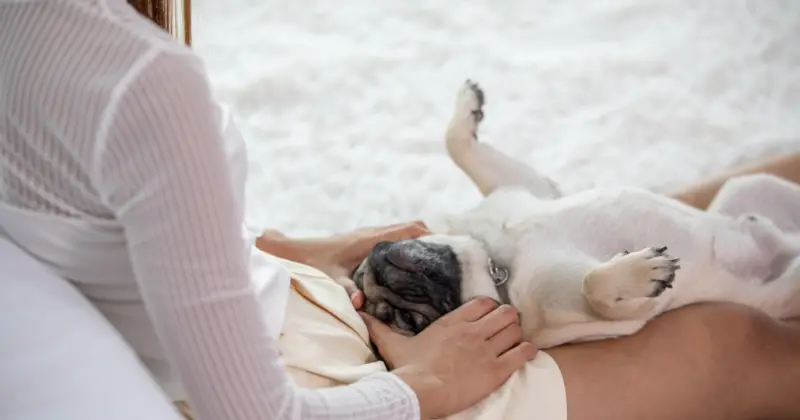
As a pug owner, it’s essential to understand and adopt certain lifestyle changes to ensure the health and well-being of your beloved pet. One crucial aspect to keep an eye on is their diet, specifically avoiding toxic foods like chocolate, which can be harmful or even fatal to your pug.
Here are some tips to implement in your daily life as a responsible pug owner:
- Monitor food intake: Pugs have a tendency to become overweight, which can lead to various health issues. Make sure to measure their food portions and avoid overfeeding them. Pay attention to their weight and adjust their food intake accordingly.
- Choose healthy treats: Reward your pug with nutritious and safe treats instead of table scraps or foods that may be harmful, like chocolate. Opt for treats specifically designed for dogs, such as dental chews or dog-safe fruit and vegetables.
- Implement regular exercise: Ensure your pug gets enough daily exercise to maintain a healthy weight and prevent obesity. This can include walks, playtime, or indoor games that keep them active.
- Schedule routine vet visits: Regular check-ups and consultations with your veterinarian will help you stay well-informed about your pug’s overall health and any specific dietary requirements they may have.
By proactively adopting these lifestyle changes as a pug owner, you can provide your pet with a safe and healthy environment, avoiding the risks associated with harmful substances like chocolate and ensuring their happiness for years to come.
Healthy Ways to Treat Your Pug
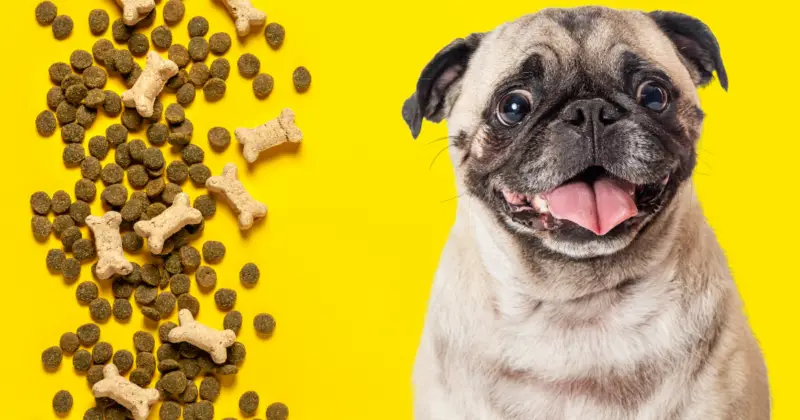
When it comes to treating your pug with snacks, it is essential to focus on healthy options that will not pose any danger to their health. It is no secret that chocolate is harmful to dogs, including pugs, so it should be avoided altogether. Instead, try offering your pug some of these nutritious alternatives.
Fruits and vegetables are excellent options for pug treats. Offer them small pieces of apple or banana, which are high in vitamins and fiber. However, remember to remove any seeds in the apple, as they can be toxic. Similarly, carrots and green beans are low in calories and provide a good source of nutrients for your pug.
Dental chews or bones can make a great addition to your pug’s diet. These treats not only keep their teeth clean but also provide them with essential nutrients. Look for products specifically made for small breeds, like pugs.
Another option is to offer your pug special dog treats that are easy to digest and contain high-quality ingredients. Look for treats with limited ingredients or specifically for dogs with sensitive stomachs. Some examples include grain-free, gluten-free, or single-protein-based treats. You can find these types of treats in most pet stores or online.
Homemade treats are a great way to ensure your pug’s snacks are healthy and free of harmful additives or preservatives. Common ingredients you can use in homemade recipes include pumpkin, peanut butter (be sure it doesn’t contain xylitol), oats, and eggs. You can find numerous recipes online to create delicious, homemade snacks for your pug to enjoy.
In conclusion, by providing your pug with healthy treats, you contribute to their overall well-being, ensuring they enjoy a balanced and nutritious diet. Avoiding chocolate and other harmful foods is essential, but there are plenty of delicious alternatives for your pug to indulge in safely.
FAQs: Can Pugs Eat Chocolate

What are the symptoms of a pug consuming chocolate?
If a pug consumes chocolate, they can start exhibiting symptoms such as vomiting, diarrhea, increased heart rate, restlessness, muscle tremors, and seizures. These symptoms are caused by the presence of theobromine, a compound in chocolate that is toxic to dogs, and can affect their central nervous system, kidneys, and heart Fuzzy Rescue.
How dangerous is dark chocolate for pugs?
Dark chocolate is particularly dangerous for pugs because it contains higher levels of theobromine compared to milk chocolate or white chocolate. Even a small amount of dark chocolate can be toxic for pugs BeChewy.
What should I do if my pug has eaten chocolate?
If you suspect your pug has eaten chocolate, call your veterinarian immediately. Quick action is crucial because theobromine poisoning can cause severe complications and even death in some cases Pug Facts.
Can white chocolate harm a pug?
While white chocolate contains less theobromine than dark or milk chocolate, it still carries some risk for pugs. The high sugar and fat content of white chocolate can also lead to gastrointestinal issues. It’s best to avoid feeding your pug any kind of chocolate Ostrali.
How much chocolate is toxic for a pug?
The toxic amount of chocolate for a pug depends on factors such as the size of the dog and the type of chocolate. As a rule of thumb, the darker the chocolate, the higher the concentration of theobromine Black Pug Site. Remember that even a small amount of chocolate can cause symptoms, so it’s essential to keep it away from your pug.
Are there any long-term effects on pugs after eating chocolate?
In most cases, if a pug receives prompt veterinary care after consuming chocolate, long-term effects can be avoided. However, if treatment is delayed, there’s a risk of permanent damage or death. Prevention is the best approach, so always keep chocolate out of your pug’s reach.

